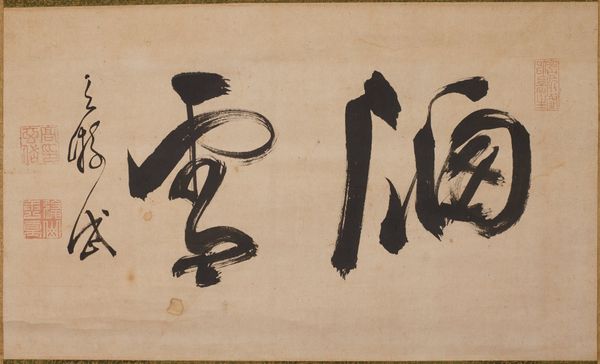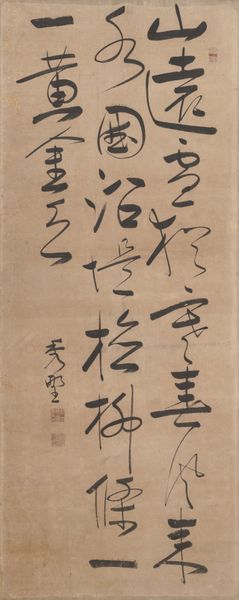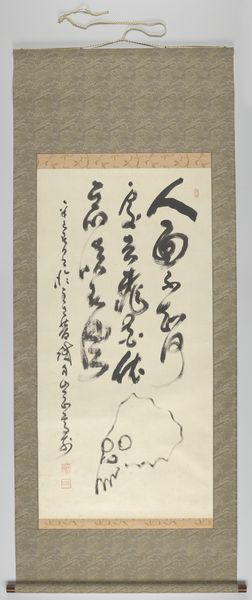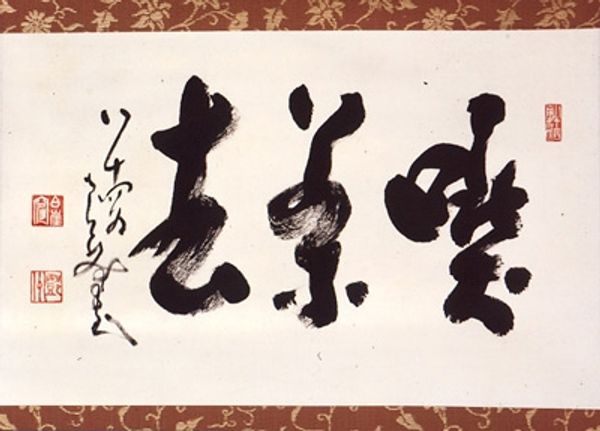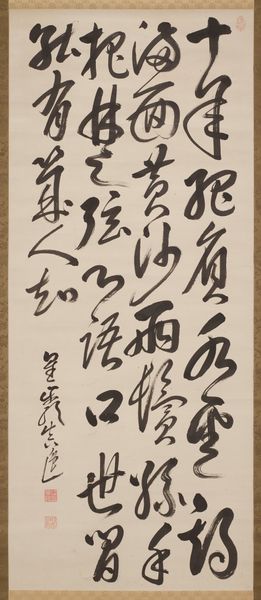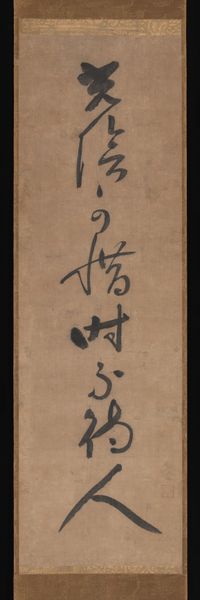![Single-Line Calligraphy [right of a triptych of single-line calligraphies] by Gaoquan Xingdun](/_next/image?url=https%3A%2F%2Fd2w8kbdekdi1gv.cloudfront.net%2FeyJidWNrZXQiOiAiYXJ0ZXJhLWltYWdlcy1idWNrZXQiLCAia2V5IjogImFydHdvcmtzLzExZTgzNmFmLWFmYmUtNGVjMS04MGEzLWIzMTc2Yzk0M2E4YS8xMWU4MzZhZi1hZmJlLTRlYzEtODBhMy1iMzE3NmM5NDNhOGFfZnVsbC5qcGciLCAiZWRpdHMiOiB7InJlc2l6ZSI6IHsid2lkdGgiOiAxOTIwLCAiaGVpZ2h0IjogMTkyMCwgImZpdCI6ICJpbnNpZGUifX19&w=3840&q=75)
Single-Line Calligraphy [right of a triptych of single-line calligraphies] 1690
0:00
0:00
drawing, paper, ink-on-paper, ink
#
drawing
#
asian-art
#
paper
#
ink-on-paper
#
ink
#
line
#
calligraphy
Dimensions: 52 3/8 × 12 1/2 in. (133.03 × 31.75 cm) (image)87 1/2 × 16 3/4 in. (222.25 × 42.55 cm) (mount, without roller)
Copyright: Public Domain
This calligraphic scroll was created by Gaoquan Xingdun, a 17th-century artist, using ink on paper. Its elegant, flowing script presents Chinese characters not just as words, but as visual symbols deeply rooted in Chinese culture. Consider the prominence of the 'wind' character. Throughout history, wind has represented change, transition, and even spiritual awakening in art. In ancient shamanistic traditions, wind was seen as the breath of spirits, a force carrying messages between worlds. Think of the Greek god Aeolus, keeper of the winds, or the ethereal wind spirits in Renaissance paintings. Here, the single, unbroken brushstroke lends this character an element of inevitability and motion, reminiscent of the continuous flow of life itself. Like a recurrent dream, the wind motif resurfaces across cultures, evolving yet retaining its essence of transformation. It engages our subconscious, stirring primal emotions tied to nature’s rhythms and the impermanence of existence.
Comments
minneapolisinstituteofart almost 2 years ago
⋮
The written word is of utmost importance in Japanese Zen. Handwritten texts by Zen teachers—everything from lectures and certificates to poems and personal correspondence—are treasured as bokuseki, “ink traces” of the master, and displayed in monasteries for their didactic potential as well as for the beauty of the writing itself. This triptych of scrolls features the bold, semi-cursive calligraphy of Gaoquan Xingdun, a Chinese monk who immigrated to Japan in 1661 and became a central figure in the early development of the O_baku school, or sect, of Zen. Each scroll includes a single, five-character Zen maxim: “Eternal blessings on the wise ruler” on the important central scroll; “Religious spirit spreads across the four seas” at right; and “Beneficent graces permeate the world” at left.
Join the conversation
Join millions of artists and users on Artera today and experience the ultimate creative platform.




